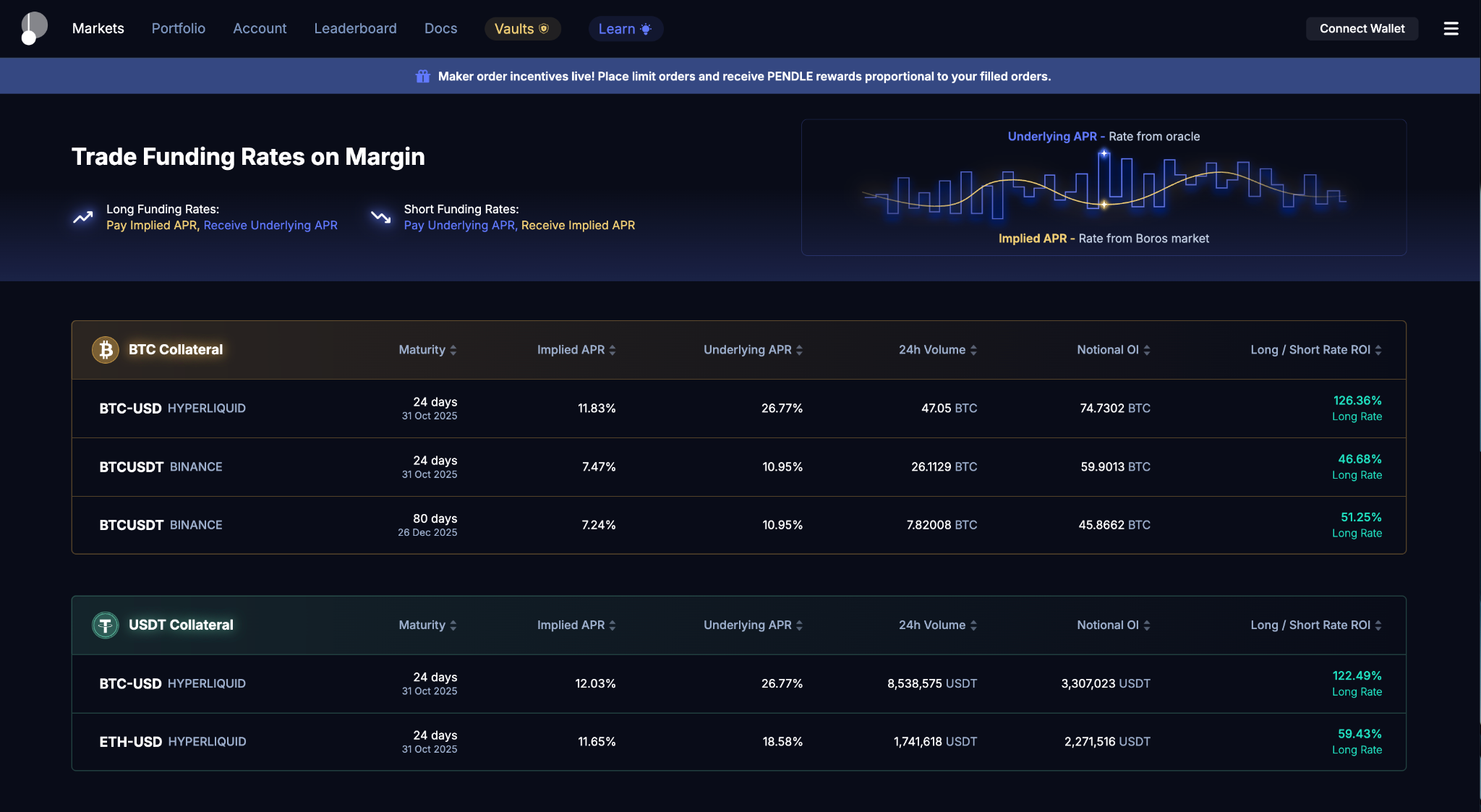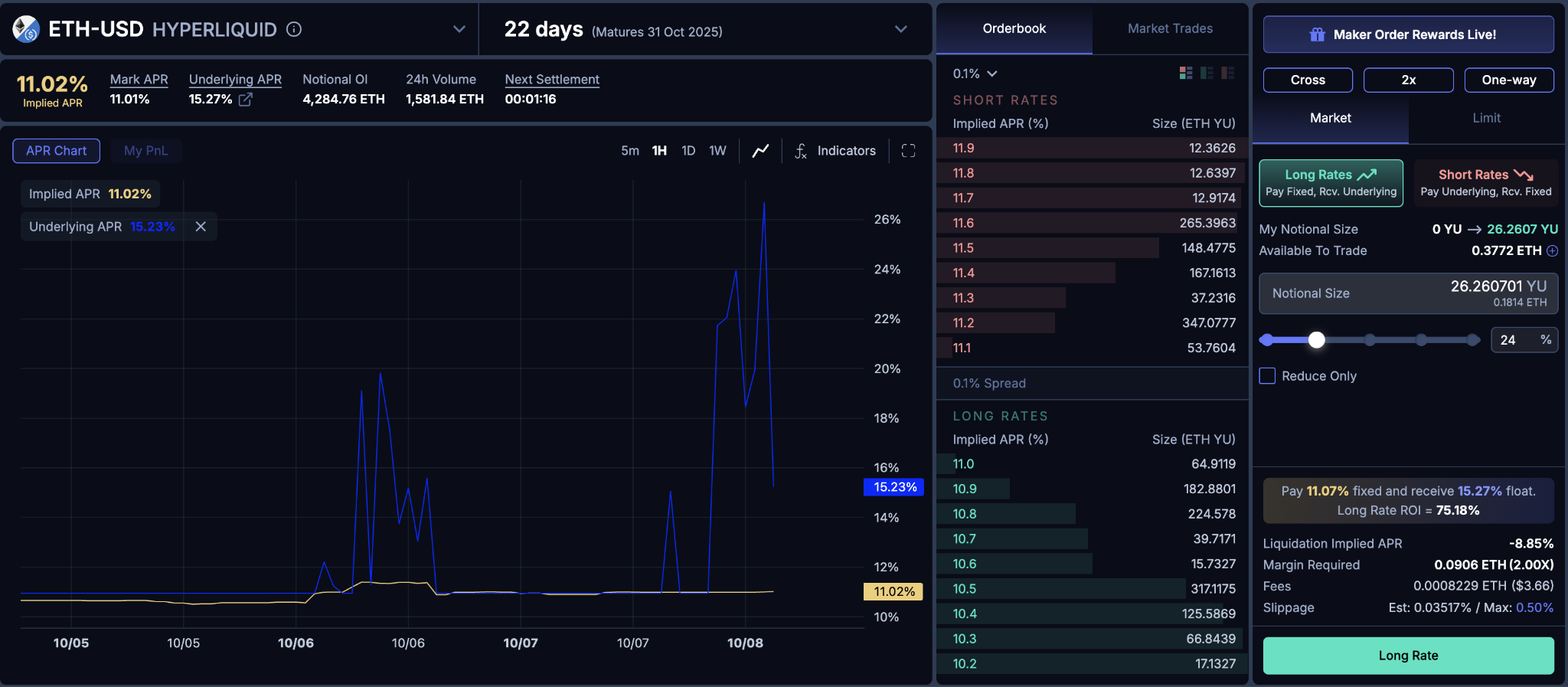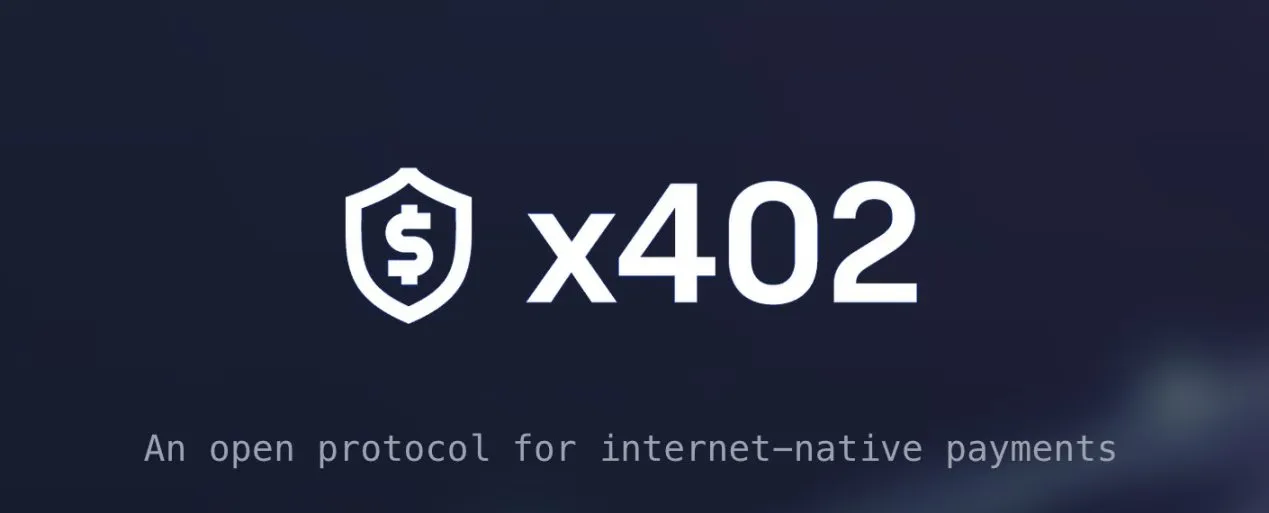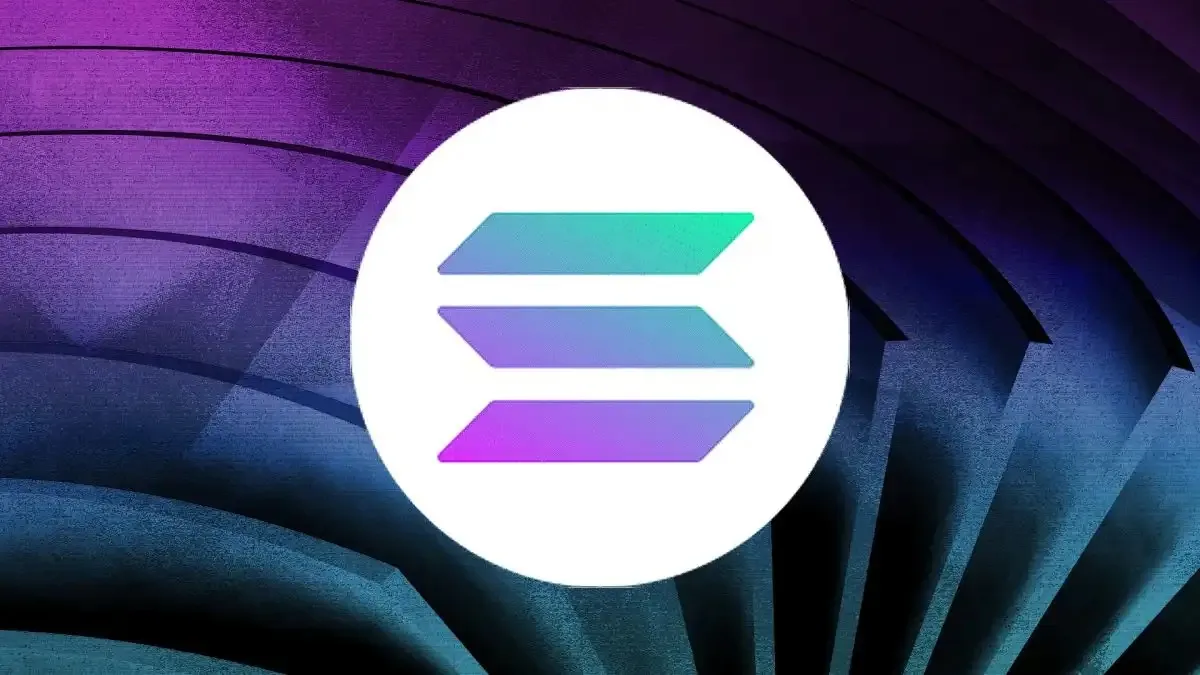TL;DR:
- Predictability of Funding Rates: They tend to fluctuate within a certain range, influenced by the "structural lower limit" created by inherent biases in the funding rate formula and the "capital upper limit" imposed by arbitrageurs. Identifying this structure can form the basis of trading strategies.
- Boros' funding rate futures allow traders to bet on the volatility of funding rates now and use leverage to amplify returns or hedge exposure to funding rates in their positions.
- Trading on Boros offers two ways to profit: 1) Funding rate income generated from the difference between the exchange funding rate and the implied rate on Boros, and 2) price spread generated from trading changes.
- Successful trading depends on three key factors: 1) Expiration time of the contract (shorter terms favor speculation, while longer terms favor trend following), 2) choice of exchange (volatile exchanges may provide opportunities to capture rate spikes, while more stable exchanges may be better suited for generating income), and 3) implied rate at entry, which should align with the overall market outlook (bullish, bearish, or neutral).
Introduction
Our Q3 derivatives report “Anchors and Limits: Understanding the Structure of Funding Rates” analyzes the structure and logic of pricing funding rates, specifically examining its structural forces: the attraction of the funding rate formula to 0.01% / 8hr and the massive institutional capital that exploits high funding rates. This reveals that the funding rate market has clear boundaries and is often predictable, and it is precisely in these inefficient areas that traders see opportunities for sustained profit.
Understanding the fundamental mechanisms is crucial, but the real challenge lies in applying them to trading. This article builds directly on our structural findings, providing a practical trading strategy on how to use funding rate futures as a new trading tool. It will cover everything from venue selection to executing funding rate futures trades on Boros.
How to View Bitcoin/Ethereum Funding Rates: Lower Limits and Upper Limits
Our previous report pointed out that the funding rate formula is crucial for predicting the astonishing behavior of rates under certain market conditions. Our analysis reveals a gravitational zone defined by structural lower limits and capital-imposed upper limits.
1. Structural Lower Limit: Designed Positive Bias
The funding rate formula itself provides a powerful "lower limit." Reviewing the formula: F = P + clamp(I - P, -0.05%, 0.05%), where I is 0.01%/8 hours on exchanges (like BitMEX, Binance, and Hyperliquid). This formula inherently creates a positive bias. To illustrate, consider a bearish sentiment where the perpetual contract is below the spot price, with a premium (P) of -0.02%.
- The clamp function becomes: clamp(0.01% - (-0.02%), …) = clamp(0.03%, …) = 0.03%
- The final funding rate remains: F = -0.02% + 0.03% = +0.01%
Even when the perpetual contract is at a discount, the funding rate is still positive. This mechanism provides a strong structural lower limit, explaining why, despite the price trend being mostly non-trending and at one point dropping >10% last quarter, BTC's funding rate was positive over 93% of the time. Negative rates require significant and sustained selling pressure to overcome this built-in positive shift.
2. Upper Limit from Arbitrage Institutions: Hard to Break Annualized 10.95%
If the funding rate formula provides a lower limit, then arbitrage institutions provide an upper limit. The benchmark funding rate is annualized at 10.95% APY. This is over 100% of what dollar money market funds can offer, making it attractive to large players like Ethena. When the premium pushes the rate far above this level, it becomes an obvious opportunity for large-scale funding rate arbitrage.
Participants like Ethena have billions of deployable capital at any time, capturing this delta-neutral yield by shorting perpetual contracts and buying spot assets. This massive capital force acts as a hard upper limit, actively pushing any rate spikes back to the 0.01% anchor.

 The lower and upper limits together create a predictable range, with deviations from this area often representing trading opportunities.
The lower and upper limits together create a predictable range, with deviations from this area often representing trading opportunities.
Building a Trading Framework
Understanding the structural lower and upper limits is the first step. The next step is to apply this knowledge to trading. This requires a deeper understanding of Boros' mechanisms and a strategic framework that considers time, trading venues, and implied rates.
What is Boros?
Boros enables on-chain funding rate trading. Through the Boros market, traders can hedge their funding rate exposure and speculate on the volatility and trends of funding rates. Since its launch less than three months ago, trading volume has exceeded $2.6 billion, making it an emerging DeFi protocol with the potential to enter the larger perpetual contract market.
Understanding Boros' Mechanism: Two Sources of Profit
Trading on Boros is different from simply holding perpetual contracts. Traders' profits and losses come from two main sources:
- Rate Spread: This is the cash flow component. For each funding rate interval (e.g., 8 hours on BitMEX), you either pay or receive the difference between the actual funding rate from the exchange and the implied funding rate you trade on Boros. If you go long on the implied rate and the actual rate ends up higher, you will receive a payment, and vice versa.
- Price Spread: This is the price component. The implied funding rate on Boros is determined by its own order book and is based on traders' expected volatility. If you go long at an implied rate of 15% APY and market sentiment pushes it up to 20% APY, the value of your position will increase, creating opportunities for capital gains when you sell.
Trading Strategy
A robust strategy considers three main variables: time, trading venue, and entry point for the implied rate.
1 – Time (Expiration Date Matters): Each implied funding rate market on Boros has an expiration date. This is a key factor in how sensitive the position is to short-term rate changes.
- Long Expiration Dates: Contracts with weeks or months until expiration are less sensitive to single funding rate payments. They represent the market's expectation of the average funding rate over the entire period. These are better suited for betting on long-term trends or structural shifts.
- Short Expiration Dates: Contracts close to expiration are highly sensitive to the next few funding rate payments. These are better suited for speculative, short-term bets on immediate rate spikes or drops.
2 – Trading Venue (Choose Your Battlefield): As emphasized in our previous report, the underlying venue determines the behavior of rates.
- For Stability and Income: Venues like BitMEX with an 8-hour window and deep liquidity provide a more predictable environment for baseline income strategies.
- For Volatility and Speculation: Venues like Hyperliquid with a 1-hour window are designed for volatility and offer more frequent opportunities to capture sharp spikes and drops.
Metrics
BitMEX (Stable)
Hyperliquid (Volatile)
Key Points
Average Rate
0.0090%
0.0150%
Hyperliquid has a higher average premium.
Standard Deviation
0.0045%
0.0250%
Hyperliquid's volatility is nearly 6 times higher, creating more trading opportunities.
Min/Max
-0.0194% / 0.0276%
-0.05% / 0.10%
Hyperliquid's trading range is significantly wider on both ends.
Frequency > 0.05%/8 hours
1%
~15%
High-yield spikes are more common on Hyperliquid.
3 – Implied Rate: After selecting time and venue, the final decision is to time your entry based on the market's implied rate versus your expectations.
Scenarios
Trade 1: Predicting Market FOMO
If you expect a bull market frenzy, funding rates may rise. Trade: Go long when the implied rate is below 10% APY. Reason: While the 10.95% anchor creates strong attraction, intense speculative periods may push rates temporarily above this upper limit, providing opportunities to capture capital gains from periodic payments and rising implied rates.
Trade 2: Predicting a Neutral Market
If you believe the market will remain relatively balanced, significant deviations from 10.95% can be seen as opportunities. Trade: Go long if the implied rate is significantly below this anchor; go short if the implied rate is too high, betting on its return to structural rates. Reason: 10.95% APY serves as a structural anchor. Trading deviations from this anchor can profit as the implied rate returns to its structural mean.
Trade 3: Predicting Market Panic
If you expect bearish sentiment, keep the structural lower limit in mind. Due to the formula's bias, funding rates may still remain positive. This creates an asymmetric opportunity. Trade: Go short when the implied funding rate is relatively high (e.g., above 7% APY). Reason: The goal is not to bet on rates turning negative, but to bet on their compression from high positive values to lower, structurally supported lower limits (e.g., close to 4% APY).
How to Trade Funding Rates on Boros
The following steps provide a general framework for implementing strategies based on the discussed concepts.
Step 1: Make a Plan
Before making any trades, establish a clear argument based on the structural framework. Are you expecting a return to the mean, a spike due to market frenzy, or a compression to the structural lower limit?
For example, an argument could be: “The implied rate on Hyperliquid is currently elevated due to short-term FOMO, and I expect it to compress back to its structural anchor.”
Step 2: Choose Your Market and Expiration Date
Based on your argument, select the appropriate trading tool:

- Venue Selection: Determines the underlying market. As the analysis shows, funding rates can vary significantly between different exchanges. If your strategy relies on capturing sharp, short-term fluctuations, then a volatile venue like Hyperliquid may be suitable. If your strategy is based on earning reliable baseline income, then a more stable venue may be preferable.
- Time Frame: Choose contract expiration dates that match your strategy. For short-term speculative bets on immediate rate changes, select contracts that are close to expiration. For a long-term view on average rates, choose contracts with several weeks or months remaining.
Step 3: Execute Trades on the Order Book

Navigate to the Boros platform and connect your wallet. Based on your argument, you will either go long or short on the implied funding rate.
- Go Long (Expecting Rate Increase): Place a buy order for the implied funding rate on the Boros order book. If the implied rate increases (capital gains) or the actual funding rate payment is higher than your entry implied rate (periodic payments), this position will profit.
- Go Short (Expecting Rate Decrease): Place a sell order for the implied funding rate. If the implied rate decreases (capital gains) or the actual funding rate payment is lower than your entry implied rate (periodic payments), this position will profit.
Step 4: Monitor and Manage Your Position
After your order is filled, actively manage your position by monitoring the two sources of returns:
- Rate Income/Expense: Track the cash flow generated from the difference between the actual funding rate on the underlying exchange and your trading implied rate.
- Capital Gains/Losses: Monitor the market price of your position on Boros. The implied rate will fluctuate based on market expectations, creating opportunities for profit or loss before expiration.
Step 5: Exit Strategy
You can realize your profits or losses in two main ways:
- Sell Your Position: Close your position on the Boros order book before the contract expires. This is ideal for capturing capital gains from favorable fluctuations in the implied rate.
- Hold to Expiration: Maintain your position until the contract expires. Your final profit or loss will be the sum of all periodic payments received or paid during the contract's lifecycle.
Conclusion: Structure Over Sentiment
The ability to trade funding rates directly marks a significant evolution in the crypto derivatives space. Our analysis suggests that success in this new domain may stem more from understanding market structure than from predicting market sentiment.
By identifying the structural lower limits created by the funding rate formula and the hard upper limits enforced by arbitrage capital, traders can establish a robust framework. Trading strategies are no longer about guessing market direction but about recognizing when the market deviates from its own structural norms. By systematically offsetting unsustainable premiums or buying into fear-driven drops to structural lower limits, traders can begin to master this new, more predictable world of funding rate derivatives.
免责声明:本文章仅代表作者个人观点,不代表本平台的立场和观点。本文章仅供信息分享,不构成对任何人的任何投资建议。用户与作者之间的任何争议,与本平台无关。如网页中刊载的文章或图片涉及侵权,请提供相关的权利证明和身份证明发送邮件到support@aicoin.com,本平台相关工作人员将会进行核查。




